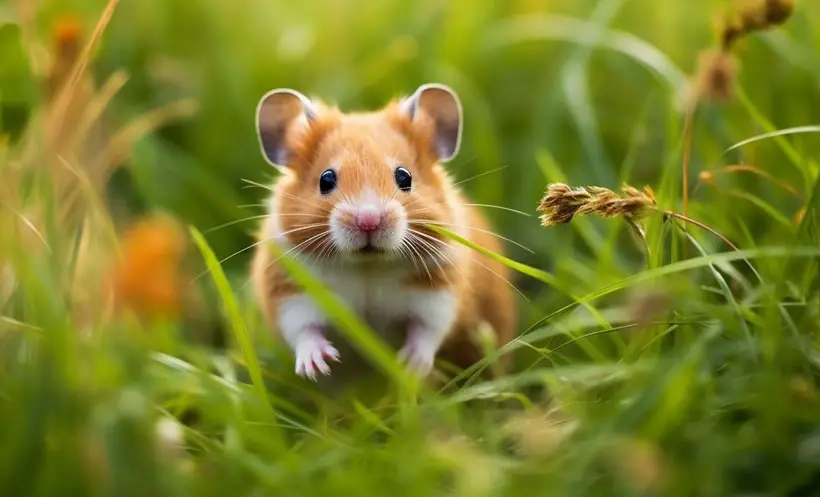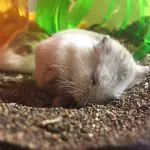Hamster Prices: How Much Does It Cost to Own a Hamster?
Hamsters are perfect pets for apartments and limited-spacing households. These cute and furry animals have stolen the hearts of millions and have been a preferred pet for many. With low maintenance needs, smaller sizes, and friendly personalities, they can make a great companion!
So, how much does it cost to own a hamster? A hamster can cost anywhere from $10 to $50. But the expense does not end here. You need to buy stuff like cages and food and can face ongoing expenses as vets and others.
Hence, before making any hasty decision, think if you can afford one or not. However, you will have a better understanding of how much it costs to own a hamster, and the costs for food, bedding, and veterinary care. So let’s see what you need to bring home a furry friend.
Table: How Much Does It Cost to Own a Hamster

Here is a table covering the initial and ongoing costs of owning a Hamster:
| Initial Cost | |
| Expense | Cost Range |
| Hamster | $10-$50 |
| Cage | $40-$100 |
| Hut | Up to $20 |
| Running Wheel | $10-$30 |
| Chew Toys | $2-$20 |
| Ongoing Costs | |
| Food | $5-$15 |
| Fresh Vegetables | $1-$5 |
| Bedding | $5-$20 |
| Vets | $50-$100+ |
Hamster Prices: Costs of Owning One
Let’s divide the cost of owning a hamster into two categories. First comes the initial cost or the single-term costs like buying the hamster, cage, bedding, food trays, toys, etc. Also, you should be prepared for ongoing costs like food, vet, etc. Let’s know more:

Initial Costs
- Hamster Price: You can buy one for only $10 to $50. The price depends on several factors like breed, age, or gender. While your average hamster can cost you $10 to $20 in a local pet store or breeder, some breeds cost more than $50.
- Cage: A good quality cage can cost up to $100 but you’ll find a decent one for around $40 to $60. Both wired and aquarium cages work well with hamsters but you need to make your cage escape-proof. Especially if you want to have dwarf hamsters.
- Hut: A hut for your hamster can cost up to $20 and ensure they are built with decent material.
- Running Wheels: Hamsters love their activities, and a running wheel will make a great addition to your cage. A good wheel can cost up to $30 whereas you can buy one as low as $10.
- Chew Toys: Toys can cost around $2 to $20 depending on the quality. Be sure to change dirty toys regularly, though.
It’s important to note that purchasing a hamster from a pet store or breeder is not the only option. Adopting a hamster from a local animal shelter or rescue organization can be a more affordable option.

Ongoing Costs
- Food: Food is one of the most significant ongoing expenses. A hamster’s diet typically consists of hamster food pellets, fresh vegetables, and occasional treats. A bag of hamster food pellets can cost around $5 to $15 and should last a few months. This depends on the size of your hamster and how much they eat.
Fresh vegetables can be purchased for a few dollars per week. It is important to avoid feeding your hamster certain types of vegetables that may be harmful to their health. For example eggplants and raw potatoes.
- Bedding: This is another ongoing expense. You need to purchase bedding every month or every few months. Prices for bedding can range from $5 to $20 per bag.
- Vets: Depending on the type of treatment required, the price of veterinarian care for a hamster might differ significantly. However, a standard office visit can set you back $50 to $100. Finding a veterinarian with experience treating tiny animals, such as hamsters, is crucial. You should also bear in mind that emergency care may be more expensive.
The regular expenses of keeping a hamster might vary based on your particular circumstances. But it’s essential to plan for the costs of food, bedding, toys, and veterinary care to keep your pet healthy and happy.
Cost of Petting Hamsters: Compared to Other Animals
Owning a hamster is typically less expensive than keeping other common pets like dogs, cats, and rabbits. In addition to food, toys, bedding, and medical care, dogs and cats also need grooming, training, and occasionally boarding. The annual cost of having a dog or cat can range from a few hundred dollars to over a thousand dollars.

Rabbits require more room and could be more expensive to buy initially than hamsters, but they have similar recurring expenditures. While buying a rabbit typically costs between $20 and $100, certain varieties can go even several hundred dollars.
Although hamsters are often less expensive than other pets, it’s crucial to take ownership of a pet into account over the long run. Hamsters may live up to two or three years. So it’s necessary to set aside money for their continuing maintenance and probable health problems.
Tips for Cutting Costs
Here are some suggestions for reducing hamster maintenance costs:
- Buying products in bulk may frequently result in longer-term cost savings for essentials like food, bedding, and toys.
- Make your accessories and toys to keep your hamsters happy. Simple toys like cardboard tubes and paper bags work well. Making your own toys and accessories from common home objects allows you to save money. Here’s a video of a DIY that might come in handy;
- Compare prices to find the best ones. To locate the greatest offers on supplies, compare costs at several pet stores and internet merchants.
- A hamster may frequently be adopted for less money from animal shelters or rescue groups. Look for one!
- Some animal shelters and rescue groups have vets who specialize in treating tiny animals or offer low-cost veterinary services.
FAQs
Here are some frequently asked questions about the cost of owning a hamster:
Q: Is owning a hamster an expensive pet?
Buying a hamster and setting up a cage can be relatively inexpensive at first. But the ongoing costs of food, bedding, and veterinary care can quickly add up. Hamsters are, however, typically regarded as a more economical alternative to other pets, such as dogs or cats.

Q: How long do hamsters usually live, and does their lifespan affect the overall cost of owning one?
Since hamsters typically live for two to three years, the expense of owning one can be dispersed over a brief period of time. The total cost of ownership, though, may go up if your hamster needs expensive veterinary care at the end of its life.
Q: How often do hamsters need veterinary care?
In order to make sure that they are healthy and up to date on their immunizations, hamsters often require yearly checkups. However, you might need to take your hamster to the vet more frequently if they exhibit any symptoms of disease or injury.
Conclusion
Owning a hamster can be a delightful experience, but it’s crucial to consider the associated costs before bringing one home. These costs include the initial setup, ongoing expenses for food, bedding, toys, and veterinary care, making it a financial responsibility.
Despite this, hamsters are generally less costly to own and care for than other popular pets like dogs, cats, and rabbits. By following money-saving tips for hamster care you can lower the overall cost of ownership. With proper planning and budgeting, owning a hamster can be a satisfying and affordable experience.




